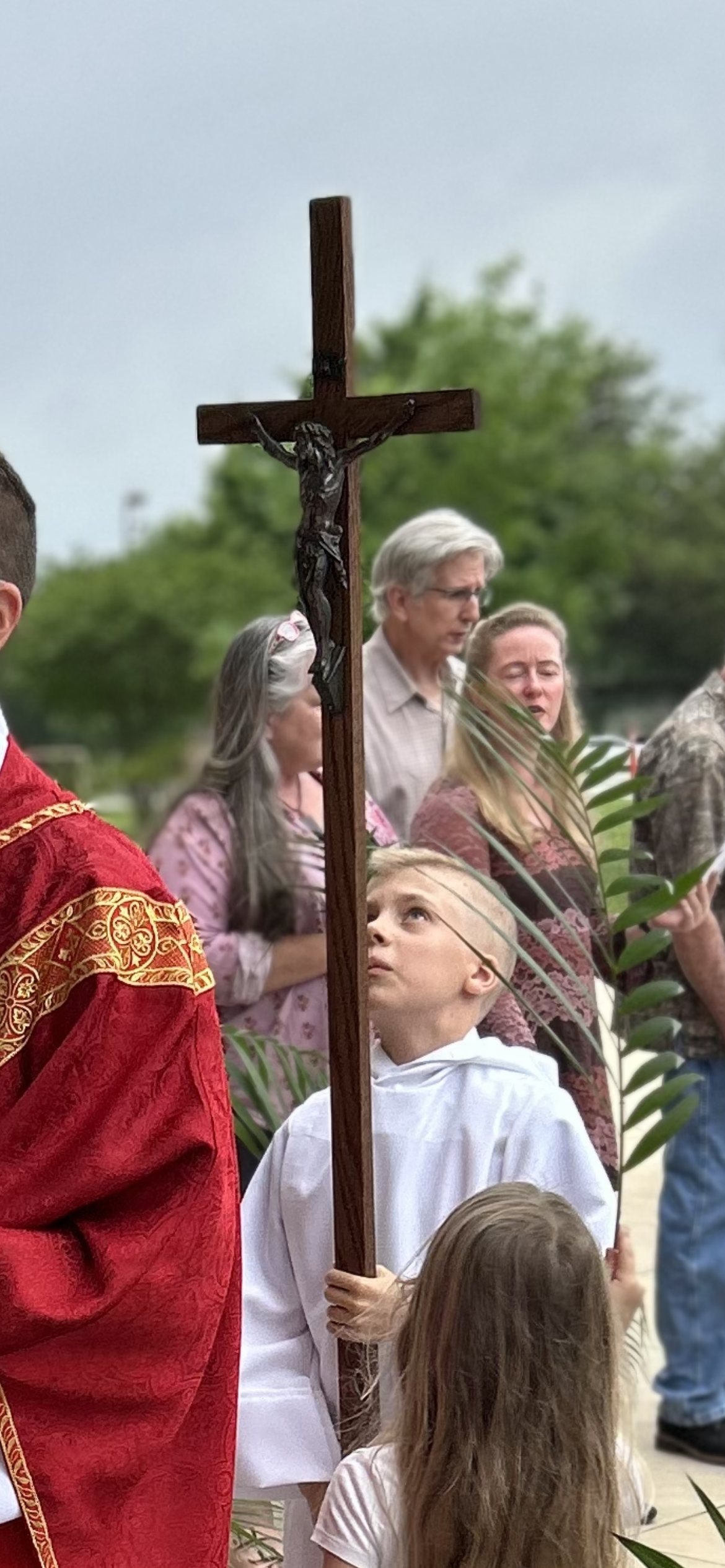Introduction:
One of the most practical questions every gathering of people must answer is “How will we begin?” “How will we welcome people?" and “How do we tell everyone why we are gathering?” The Procession serves a simple but important role of answer these questions. The Procession is a visual, bodily, and verbal instruction on why we are gathering.
A processional cross holds a central role in the procession and within the liturgical practices of the Christian faith. It is often a beautifully crafted cross that is carried at the forefront of a religious procession. The processional cross symbolizes Christ's victory over death and serves as a reminder of His sacrificial love. As it is carried forward, leading the clergy and congregation, the processional cross represents the presence of Christ leading His people, inspiring and devotion in the hearts of believers. The processional cross exemplifies unity and serves as a visual representation of the faith's central message, guiding the faithful towards the altar where they can partake in the Sacrament of the Holy Communion and worship the Lord.
The Basics: What is a Processional Cross?
The Processional Cross can be a bare cross or a crucifix (a cross with the body of Christ) and is processed in from the back to the front at the beginning and back out at the end of the Divine Service.
The individual who carries the Processional Cross is known as a “Crucifer.” The crucifer always processes in first, with the pastors and other assistants following.
The cross is placed some place at the front of the sanctuary on a stand or attached to the wall for all to see.
Why does the Divine Service begin with a Processional Cross?
Similar to a national flag representing a nations history and values, so the processional cross represents God’s redeeming work in the world. Beginning the Divine Service with the processional cross is a powerful reminder that Christ is the focal point of the service. The Christian gathering is not focused on human maximization tips, motivational speeches, or simply emotional appeals, but rather is initiated by and focused on the person and work of the God-Man Jesus Christ who carried out and is bringing to completion our redemption by His birth, life, death, resurrection, ascension, and future return.
For Christians, in a very real sense, the processional cross it is a banner of our victory over sin, death, and the devil. As we gaze upon the cross, it should fill the faithful with gratitude, joy, and thanksgiving of Christ’s work on their behalf.
The processional cross also serves as a visual representation of Christ’s presence in our midst. Christ has not abandoned his children but it with them in the valleys of darkness (Psalm 23).
Why do we standing and face the Processional Cross?
In almost all cultures around the world, standing is how someone expresses honor, reverence, and respect. We stand when meeting someone at the dinner table, we stand when meeting the President of the United States, the court room stands when the judge enters, and the people stand when the bride enters. We stand and face the Processional Cross for the same reason. We are acknowledging that this gathering is focused on God, and that as holy and righteous, demands our absolute allegiance and respect. We not only stand, but in many historic traditions they also face the cross and turn with it as it enters. It is also common to see those present to make a slight bow towards the cross as it passes in reverence.
At Trinity San Antonio Church, we reverently and joyfully stand for the processional cross as it symbolizes the journey of faith that we embark upon as a community. By standing in reverence for the processional cross, we honor God's presence among us and align ourselves with His grace and love. It serves as a unifying symbol of our shared faith, bringing us together as we follow the cross, entrusting our lives to the One who goes before us.
What is the Significance of the Processional Hymn?
The Processional Hymn is focused on declaring the kingship, holiness, and power of God.
Psalm 100:4 says, “Enter his gates with thanksgiving, and his courts with praise! Give thanks to him; bless his name!” Praise of God is an appropriate way to enter His presence.
This hymn is often selected in light of the season of the Church Year or Feast Day. For example, on Palm Sunday the Processional is traditionally “All Glory, Laud, and Honor” as we remember Christ’s Triumphal Entry into Jerusalem.
For comparison, while many contemporary churches stack all the songs into one “praise and worship” session at the beginning of the service, liturgical churches intersperse their songs throughout the service.



